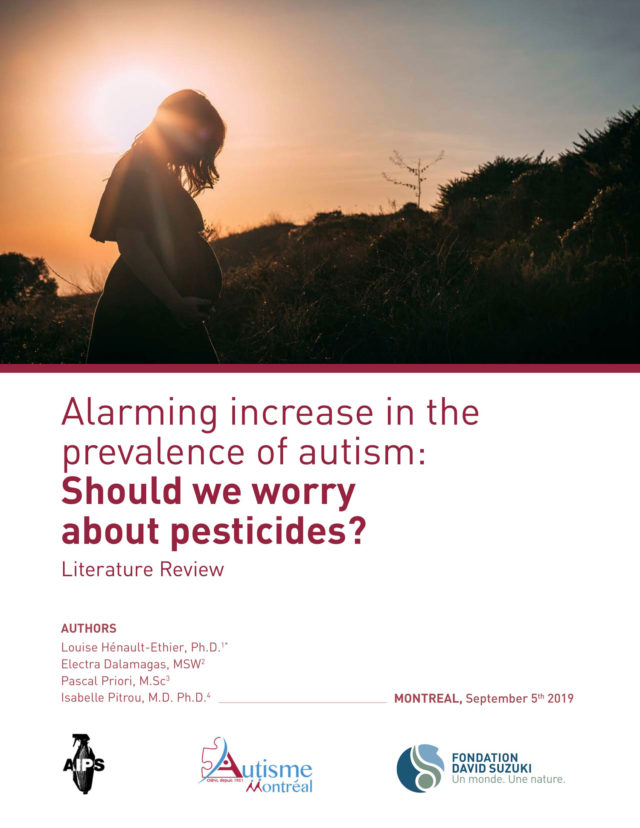Alarming Increase in the Prevalence of Autism: Should We Worry About Pesticides?
Published by:
David Suzuki Foundation and partners
Authored by:
Louise Hénault-Ethier,
Electra Dalamagas,
Pascal Priori,
Isabelle Pitrou
Partners:
Autisme Montréal,
Alliance pour l’interdiction des pesticides systémiques
Environmental rights pesticides, chemicals and toxins, human health and wellbeing
Autism is a complex neurodevelopmental disorder affecting 1 in 66 children in Canada. Genetic vulnerability and increase in diagnosis cannot account for the alarming increase worldwide and it is becoming an urgent public health concern.
Pesticides are amongst the environmental factors with the highest association with autism. Pesticide exposure before conception, during pregnancy and in early childhood increase the risk of developing autism in some instances the risk of comorbid intellectual disability. Many pesticides, particularly neurotoxic insecticides, have not been tested for their neurodevelopmental toxicity during their registration process. Insecticides, herbicides and fungicides were listed for correlations with autism in several scientific studies. They include well known active ingredients like DDT, chlorpyrifos, pyrethroids, neonicotinoids, glyphosate and many others.
Though the medical diagnosis of autism is based on behavioural observations, biochemical markers of autism are known. They include endocrine disruption, oxidative stress, reduced mitochondrial activity, lower detoxification capacities and altered neuronal signaling. These same pathways can all be altered by pesticides.
The long-term adverse effects of pesticides have been described as a “silent pandemic”. The resulting neurodevelopmental disabilities are at psychological, emotional and financial cost that is far too high for the affected individuals, their families, their communities and society as a whole. Decreasing exposure to harmful chemicals such as pesticides is an important precautionary measure to help curb the increase of several modern day diseases which could also play a role in preventing autism.
